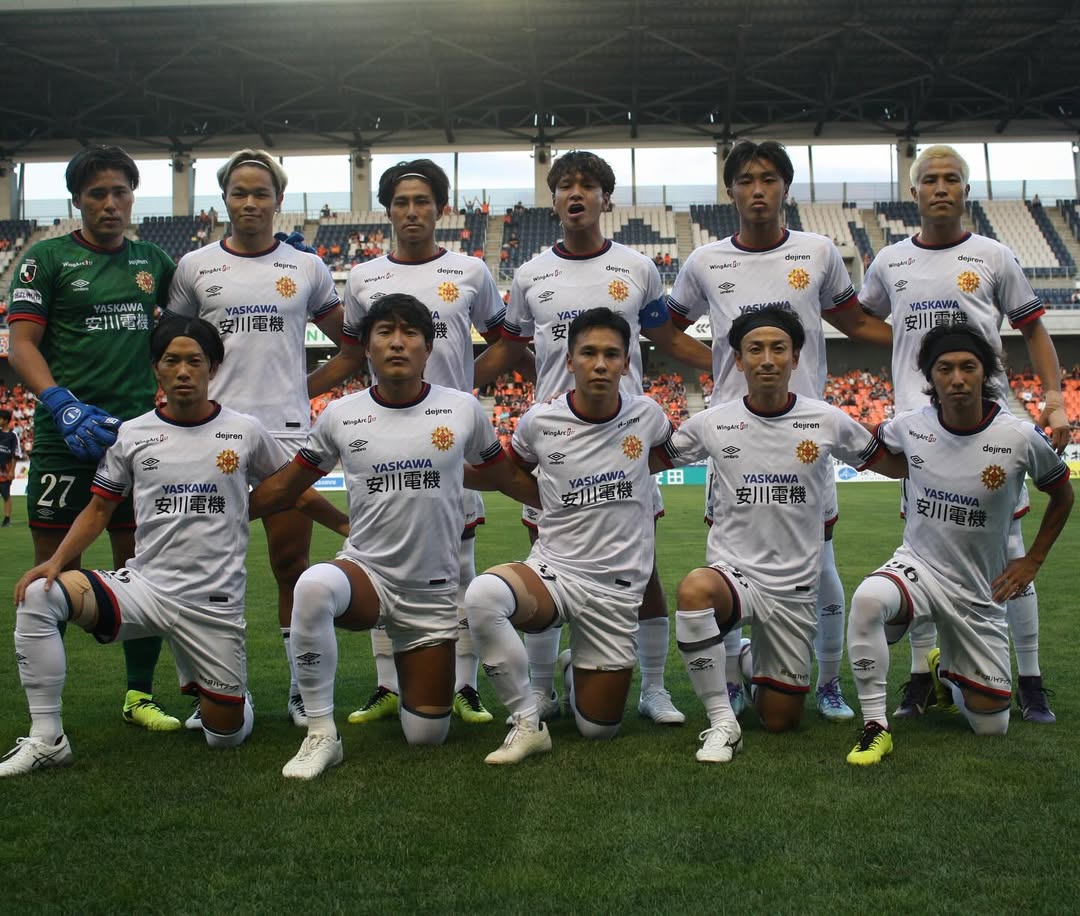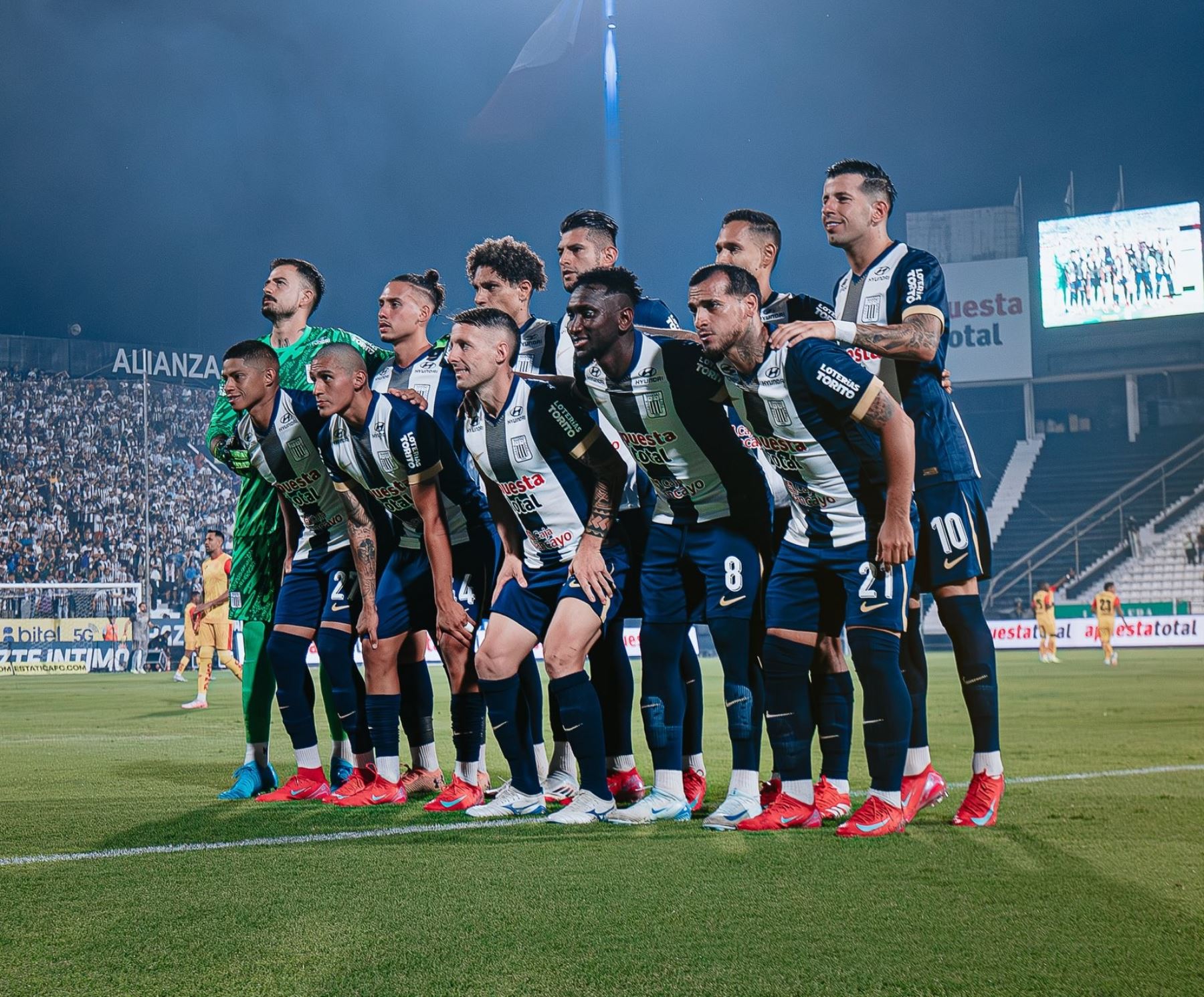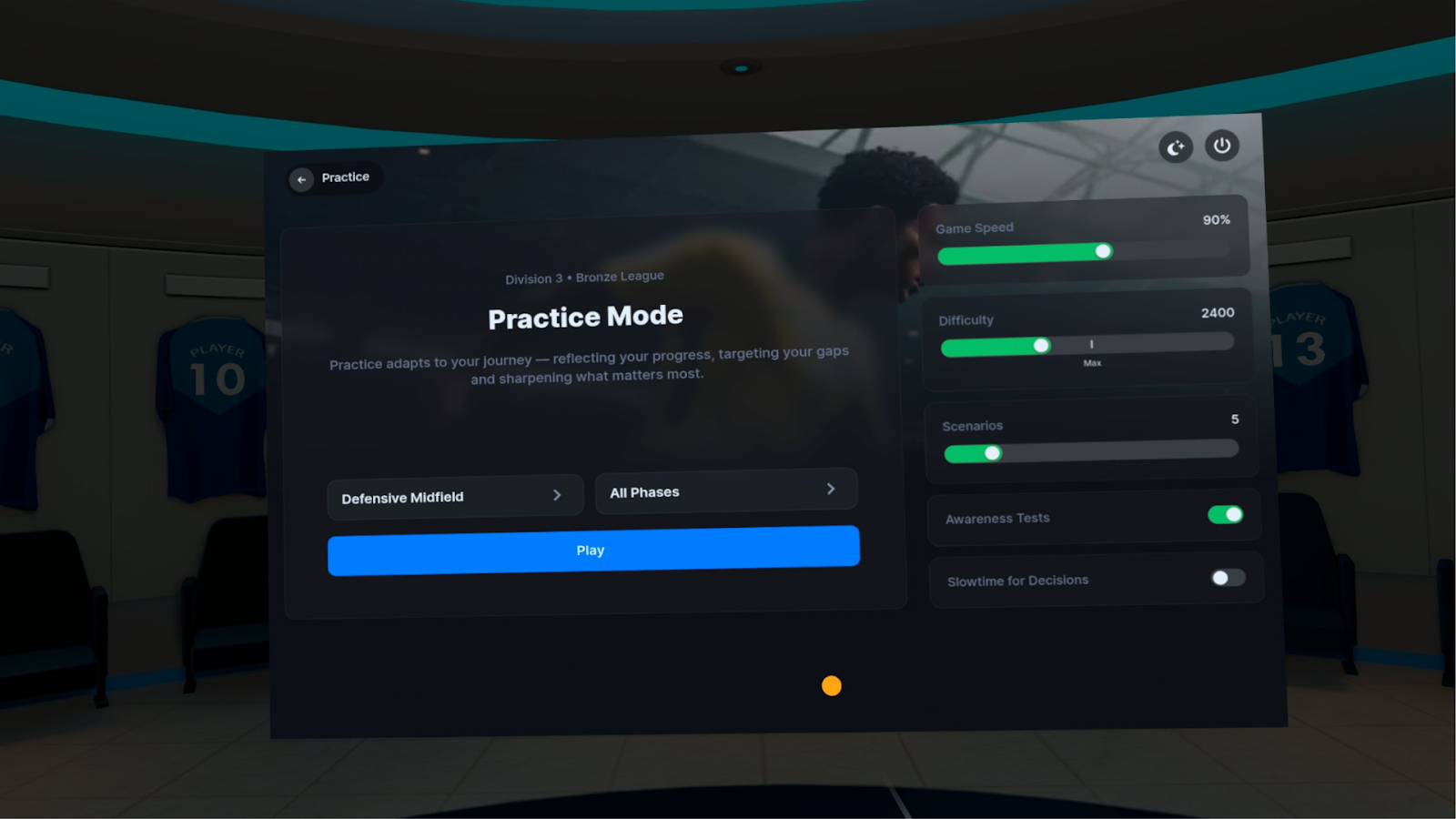In soccer, transitions are the moments when possession switches from one team to the other. A attacking team loses the ball so now needs to defend. A defending team regains the ball so can now switch their focus to attack.
Transitional moments include launching a counterattack after winning the ball back. Immediately counterpressing after losing possession. Making a recovery run to quickly get back into an organized defensive shape.
Transitions play a critical role, both in attacking and defensive phases of soccer. They require a mixture of speed, decision making and tactical awareness. In this blog, we will explore transitions. Looking into why they matter, and how players and coaches can develop this area of their game.
What are transitions in soccer?
Transitions happen when the game shifts from one phase to another - attack to defense or defense to attack. There are two main types of transitions:
- Attacking Transitions: When a team regains possession and quickly moves from defense to attack. Often using a counterattack to exploit spaces left by a momentarily disorganized opponent.
- Defensive Transitions: When a team loses possession they must quickly shift from an attacking mindset to a defensive one. Certain teams counterpress (or Gegenpress) in these moments, whilst others quickly recover to get back into shape.
Let’s now look into both attacking transitions and defensive transitions in more detail.
Attacking Transitions
Attacking transitions typically occur when a team wins the ball and moves quickly into offensive play. This is often referred to as a counterattack in soccer. A quick transition aims to exploit gaps left by the opposition’s defensive setup. Whether this is a numerical advantage or a high defensive line.
The success of a counterattack depends on the ability to play the ball forward quickly and accurately. Teams who transition to attack at speed can catch their opponents off-guard, capitalizing on unbalanced defensive structures.
Key components of attacking transitions are:
- Speed and Precision: The quicker the team moves the ball forward, the more likely they are to exploit the opposition. Passes should be direct and well-timed, often aimed at runners exploiting open spaces.
- Exploiting Space: A successful counterattack often relies on recognizing and utilizing the space left by the opposition. Attack quickly into the most dangerous areas.
Defensive Transitions
Defensive transitions are when a team loses possession, and quick recovery becomes vital.
Counterpressing (or Gegenpressing), most associated with Jürgen Klopp, is one of the most aggressive and effective defensive strategies. The idea is to immediately press after losing the ball.
This is both an attacking tactic and also a defensive one. As it denies the opposition any time or space to exploit the turnover. Preventing potential counterattacks before they have even begun.
Other strategies in defensive transition are quickly getting back into shape using recovery runs. After losing the ball, players sprint back into position to try and limit the threat of the potential counterattack. The quicker a team can regroup after a turnover, the less likely they are to be punished.
Key components of defensive transitions are:
- Counterpressing: Players work collectively to recover possession before the opposition can launch a counterattack. Preventing opponents from exploiting the spaces left behind by your team’s attacking efforts. In the right area of the pitch, counterpressing can also become an attacking weapon.
- Recovery Runs: When the team is out of position, players must sprint back into defensive shape. These runs, especially from attackers and midfielders, are critical to stop quick breaks from the opponent. Protecting central areas in front of goal is the priority.
- Delay Tactics: It is not always possible, or sensible, for teams and players to immediately try and regain possession after losing it. If you are the last defender between the opposition and your goal, and you have half a pitch to cover, players can be better off trying to delay their opponent, as opposed to actively engaging. By not over-committing, it allows your teammates time to recover and get back into shape to help defend the situation. Once reorganised and your odds of successfully defending the situation have increased. Then would be a more opportune time to actively engage the opponent.
- Reorganize: Linked to recovery runs and delay tactics, players must not only quickly recover by sprinting back, but also try to get back in the team’s defensive organisation. The faster the team can reorganise itself, the better their chances of defending the pending attack.
The importance of transitions in soccer
Transitions help dictate the flow of a game and the battle for control. Teams that excel in transitional moments are able to capitalize on the other team’s vulnerabilities. Ideally creating goal-scoring opportunities or preventing them from doing the same.
Transitions are a constant throughout a match, and their frequency is staggering. In fact, during the FIFA Men’s World Cup 2022, 68% of all possession starts came from transitional moments. In the English Premier League, the percentage was even higher with 70% possession starts coming from transitions.
Emphasizing just how crucial these periods are at the highest level of soccer. But transitions aren’t just important in professional soccer - they are key at every level. Especially at youth levels where transitions are likely to be even more frequent, with the ball constantly swapping sides due to players' technical abilities.
‘In contest’ and duel considerations
Another way of looking at transitions is to consider the moments where possession is ‘in contest’. These are the moments when neither team is in control of the ball. Think of periods of chaos after misplaced passes, loose balls, clearances, block shots, or duels.
Using the FIFA Men’s World Cup 2022 as an example, 11% of the game was spent in a state of ‘in contest’, where neither team controlled the ball. Despite sounding small, this equates to around 12 minutes per game, showing how frequent these chaotic moments can occur.
When considering the volume of both transitional and ‘in contest’ moments in soccer, it’s imperative that players are training for these inevitable eventualities. But these contested moments are not just about the ball being loose - it’s about how quickly players and teams can react to attack, defend, or regain control.
Key components of these ‘in contest’ moments, and how they link to transitions, are:
- Winning Duels: Whether it’s an aerial duel or ground duel, seizing control of the ball from a duel determines whether your team will be facing an attacking or defensive transition.
- First-Contact: Winning the first-contact on headers, or stretching to poke loose balls out of your opponents reach, all help impact the balls direction. Giving your side more of an advantage in gaining possession.
- Second-Balls: When the first challenge is missed, the second ball becomes critical. Teams that anticipate where the ball will land after a clearance or tackle can gain possession and immediately transition into attack, as opposed to needing to defend.
- Tempo: The tempo of a game is often dictated by the speed of transitions. Teams that counter attack in soccer or counterpress often cause the ball to change sides more, leading to end-to-end games where there are minimal periods of calm and composure.
- Psychological Impact: Fast transitions often create psychological pressure on opponents. When a team quickly shifts from attack to defense (or vice versa), it forces the opposing team to react faster than they would like. This can create panic, mistakes, and defensive vulnerabilities.
Transitions in the modern game
Teams that master the ability to switch between attacking and defensive phases seamlessly have a competitive edge. That’s why many modern coaches now view transitions as one of the most important phases of the game.
In the past decade or so, teams like FC Barcelona, Bayern Munich, Liverpool and Manchester CIty have all heavily integrated transitions as key components of their tactical identities.
Manchester City are known for their patient possession approach. Aiming to control the risk and tempo of their own play in an attempt to minimize the amount of transitional moments they have to face. Transitional soccer increases the randomness of the game and therefore results. Plus, it takes a physical and mental toll on players. So why not try and avoid it?
Whereas on the other hand, Liverpool under Jürgen Klopp were synonymous with their ‘organised chaos’. Less concerned about retaining possession, as they thrived in highly transitional games. Ball losses became new opportunities to counterpress and counterattack. They recruited players physically to suit how the team plays.
These two examples show the importance of transitions. Even between two contrasting strategies - possession-based play and counterattacking. Both approaches can be effective, depending on the team’s strengths and how well they execute in these critical transitional moments.
Soccer transition drills: how can teams and players better develop their transitional skills?
For both attacking and defensive transitions, players need to develop a range of technical, physical, and mental skills.
So whether you’re a player looking to improve your performance during transitional moments. Or a coach trying to instill a more dynamic transitional game in your team. Here are a few tips and soccer transition drills to help enhance your skills.
Technical Skills:
- Passing under pressure: Players need to develop the ability to pass effectively and with quality when pressed by opponents. Practice sessions that focus on passing the ball under pressure (e.g. in tight spaces) and using one-touch passes with team mates. These are essential skills for attacking transitions whilst also helping minimise the risk of causing defensive ones.
- Running with the ball: Controlling the ball whilst running at speed will help players in counterattacking situations. Incorporate dribbling drills, in both large and small spaces to help develop this trait.
- Duels: Winning duels - whether on the ground or in the air - is highly valuable. Use opposed 1v1 practices and small-sided games. Vary restarts of play to allow players to become more comfortable and confident in competing.
Physical Skills:
- Sprinting: Develop the necessary speed for transitions, with sprinting drills. High-intensity sprints, followed by short recovery periods, mimic the intensity of game situations.
- Endurance: Transitions happen throughout the match, therefore players need stamina. Building endurance through interval training or small-sided games will help players maintain their intensity levels during transitions.
Mental Skills:
- Quick Decision Making: Start by creating simple drills where players have to make quick decisions after gaining possession. This can be as simple as a 2v2 or 3v3 game where teams must quickly move from defense to attack after gaining control of the ball.
- Resilience: Share with players the frequency that transitions and contested moments occur in professional soccer. Explain that this is part of the game, especially to younger players. Teams and players will lose the ball at times. Positive reactions and reacting quickly are key.
Team Skills:
- Attacking Transitions: When a team wins possession, the emphasis should be on quick, direct play into the attacking third. Counterattacking drills that focus on fast ball movement and supporting players runs can help exploit gaps in the opponent’s defense. The intention is scoring a goal.
- Defensive Transitions: Training exercises that simulate a turnover, followed by rapid sprinting to cover defensive space, can improve players’ ability to transition into defense. Increasing their familiarity and appreciation of recovery running.
- Counterpressing and Gegenpressing: After losing possession, immediately pressing to win the ball back is an essential defensive transition strategy. Counterpressing drills that focus on high-intensity pressing and quick decision-making can train players to recover possession before the opposition can capitalize on the turnover.
Any game of soccer will naturally create transitional moments. However, if coaches are looking for inspiration on ways to hone in on this aspect of the game, then check these example transition themed drills out. Perfect for both younger and older player.
- Four Zone 3v3(+3) practice from former England U21 manager Aidy Boothroyd. The objective of this practice is for the players to get used to showing quick footwork and reacting to changing circumstances.
- 2v1 / 3v2 Transition Game by world-renowned coach Michael Beale. In this practice, attacking players immediately need to switch to defending and vice-versa. Using a small sized playing area helps increase the intensity for the players.
- 4v2 or 5v2 Counterpressing practice from a German coaching clinic. This is a team possession game in two adjacent grids with the ball transferring grids after every regain forcing players to react and move quickly.
Transitions aren’t just about technical and physical attributes, and quick reactions. These moments also require a high level of tactical understanding. Awareness of the situation, anticipation of the defensive turnover, vision to spot the counterattacking opportunity. Making correct decisions under pressure. In essence, game intelligence.
Game intelligence is the process of information gathering, through the art and behaviour of scanning. Then using that intel to decide your next action. Studies have shown that players who scan more, retain possession more often, and make more successful forward passes.
Therefore, the ability to effectively scan, gather information and make split-second decisions is a transition necessity. However, these qualities are hard to train individually. As players need realistic game environments to recreate the conditions. That's why lots of professional players and clubs are turning to virtual reality to help.
Virtual reality soccer training
Through VR soccer training players can step onto a virtual field and immerse themselves in realistic game scenarios. Players can develop cognitive skills, such as scanning, vision, awareness and decision-making. All without the physical demands of practice.

At Be Your Best, our VR soccer training app recreates moments players will constantly face on the field. Encouraging players to scan where the ball, teammates and opponents are, to help form what their decision will be once they receive the ball. Then measuring and analyzing performances post-session. Looking into metrics such as scan frequency, quality and assessing the decision you made.
In addition to our regular Practice and Career training modes, Be Your Best users can also partake in Challenges. Each Challenge has been developed to work on a specific aspect of a player's game. Whether that's positionally or tactically.
Several Be Your Best Challenge specifically focus on immersing players into transitional situations on the field. Making this type of training capability invaluable to soccer players and the perfect accompaniment to real-life training.
Examples of these Be Your Best transitional-themed challenges include fullbacks in transition, centre-backs in transition, central midfielders in transition, and wingers in transition.
Be Your Best's VR training affords opportunities for highly realistic, relevant and repetitive training. All essential in developing a player's cognitive skillset. Vital in becoming a more calm and composed soccer player.
Learn more about the skill of scanning, and virtual reality soccer training, by signing up to our Game Intelligence Series today. Receive 7-days worth of free educational video content direct to your inbox.
We hope you enjoyed this exploration of transitions in soccer.





